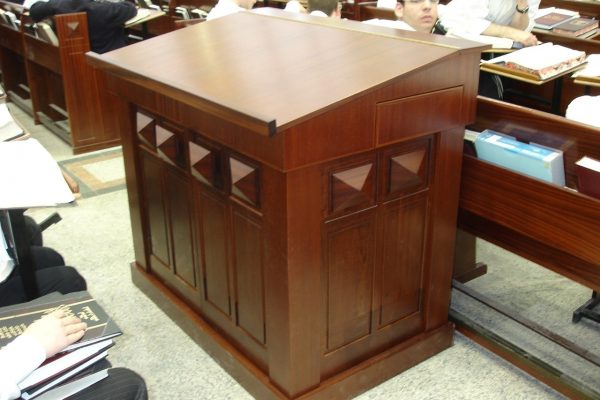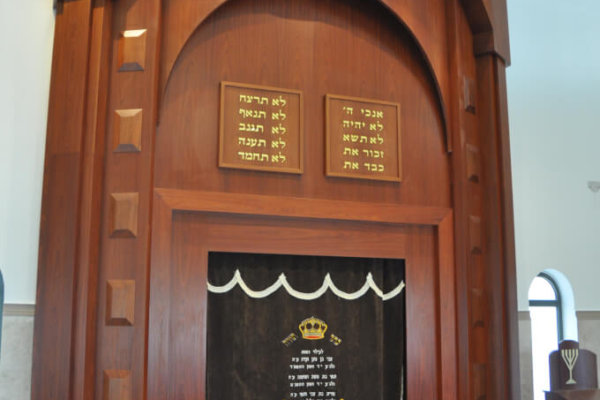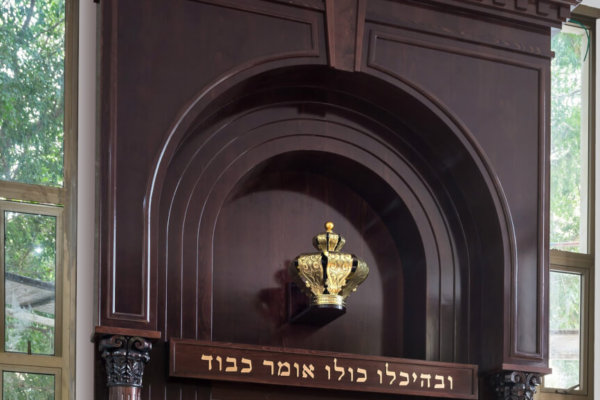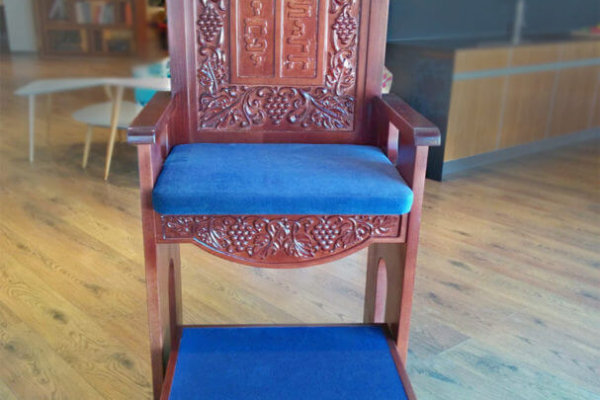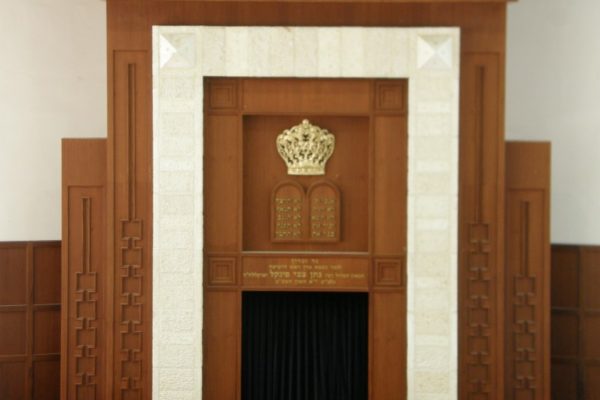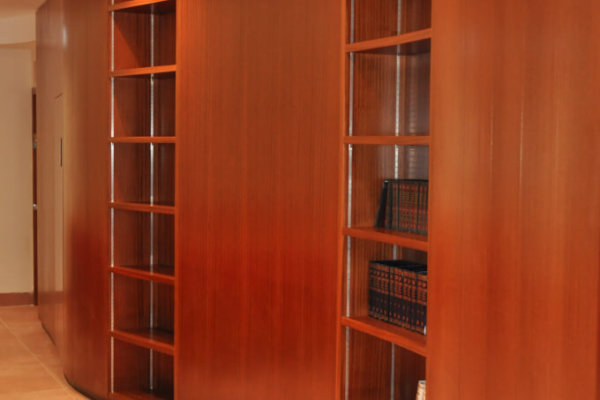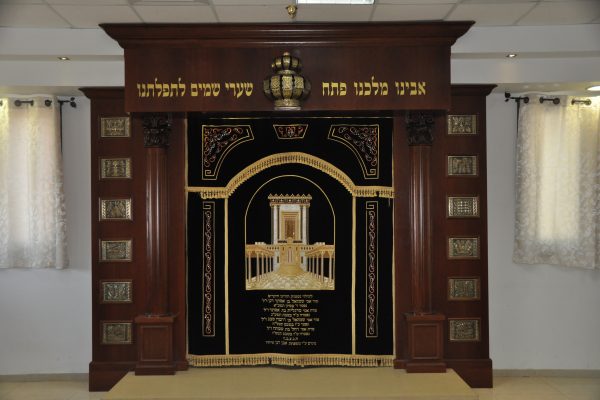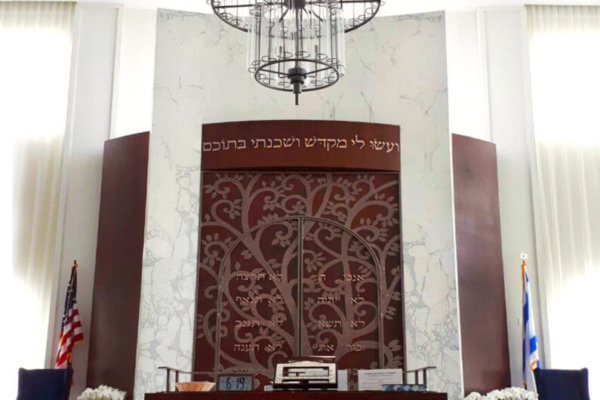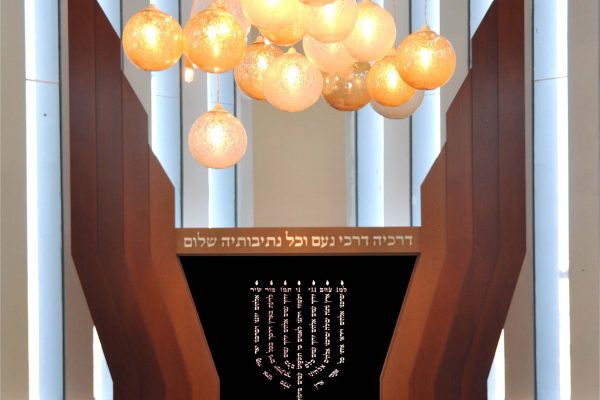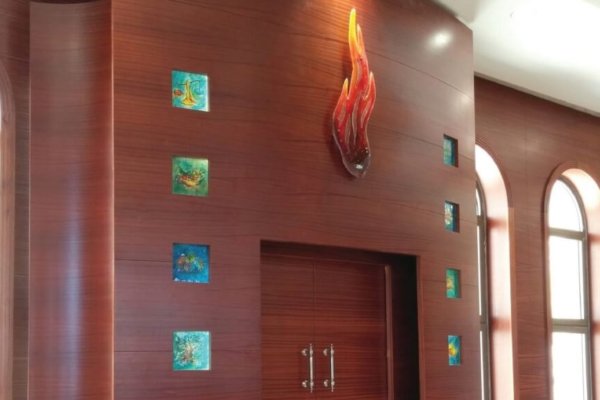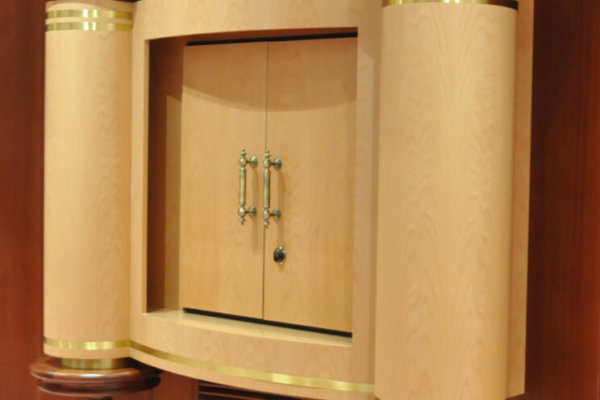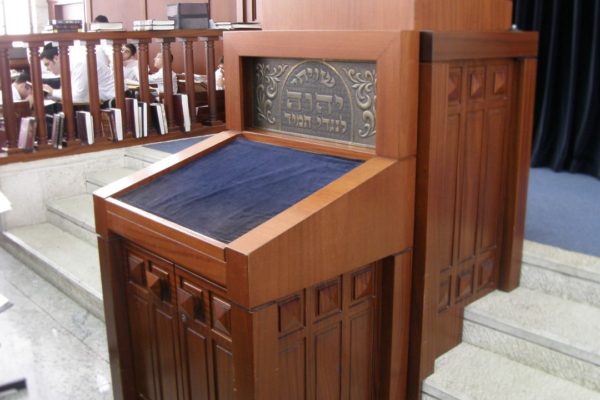Products
The sanctity of the Holy Ark is greater than that of the synagogue. "Aron Kodesh", "Holy Ark" or "Heichal" is the place where the Torah scrolls are located. The parochet can be independent, attached to the wall or as an niche in the wall of the synagogue that closes with doors. According to Jewish law, there should be two separations between the congregation and the Torah scrolls. Therefore, the Ark usually has a pair of doors as one separation and a curtain (curtain) as another. In most communities of the world, the Torah scrolls are placed standing in the Ark.
"Bimah" or "Teyvah" or "Reading Table" is the table on which the Torah is read upon. The shape of the table is different between the different communities and stems from a different form of use.
In Ashkenazic communities, the Torah scroll is rolled on two wooden poles called "trees of life" and covered with a cloth "cloth". This book is recited with a sloping bed on the table. In most Sephardic communities, the Torah scroll is found in a round hard box with 12 wigs, in a book like this, standing on the table. In the Yemenite communities, the Torah scroll is found in a hard round box, but the custom is to read the Torah scroll when it is tilted on the table.
In Ashkenazic communities, the Torah scroll is rolled on two wooden poles called "trees of life" and covered with a cloth "cloth". This book is recited with a sloping bed on the table. In most Sephardic communities, the Torah scroll is found in a round hard box with 12 wigs, in a book like this, standing on the table. In the Yemenite communities, the Torah scroll is found in a hard round box, but the custom is to read the Torah scroll when it is tilted on the table.
The cantor's lectern is used in Ashkenazi communities only, however, since the cantor's lectern also serves as a demanding page, there are communities that place such an item on the front of the synagogue. Usually the front of the cantor (in front of his face) you will see the verse, "I will meet the Lord before me always" in order to "remind" the cantor of the sanctity of the class in which he is used. In certain communities it is customary to light candles in front of the cantor, and therefore in certain cantorial columns there is preparation for candles or for electric lighting. Some of the Cantor's columns incorporate additional elements such as a clock, a removable shelf, a drawer for prayer books, a prayer shawl and a candle stand.
Libraries dedicated to synagogues and religious libraries or to yeshivas are usually constructed using methods and materials that enable the provision of heavy and large books. These libraries are also used for rack holders that are capable of carrying weight but allow for great flexibility for high or low books.
Chair of Elijah is a throne-like, richly carved and ornamented piece of furniture, find in most synagogues (Hebrew: kisse shel Eliyyahu). The newborn is placed on the elevated Elijah’s Chair, for tradition says that Elijah the prophet attends every Brit Milah (brith).

